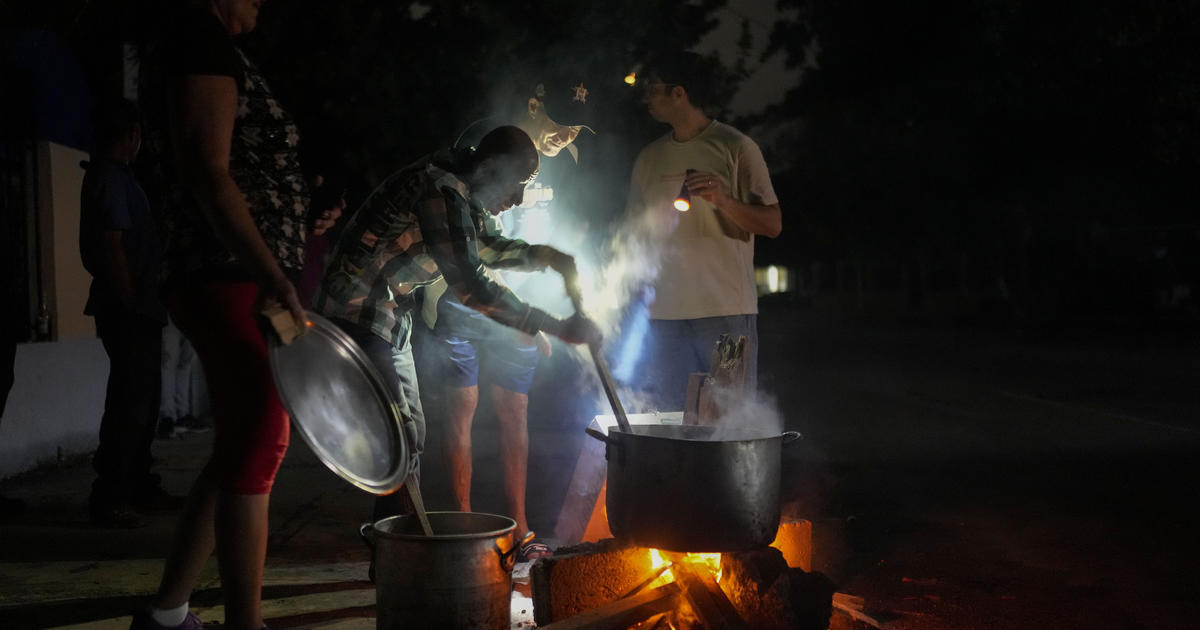Cuba grappled with a widespread and prolonged power outage, leaving millions in darkness and highlighting the country’s struggling energy infrastructure. The island-wide blackout, one of the worst in recent years, exposed the fragility of Cuba’s energy system and the resulting hardship faced by its citizens. The lack of electricity extended beyond mere inconvenience, impacting essential services, food preservation, and daily life for millions. This situation underscores the need for significant investment and reform within Cuba’s energy sector to prevent similar future crises.
The Extent of the Blackout and its Impact
The power outage, initiated by the failure of the Antonio Guiteras power plant, plunged much of Cuba into darkness. While some areas in Havana, the capital city, experienced partial restoration, the majority remained without electricity for several days. This wasn’t a simple inconvenience; the blackout cascaded into a series of compounding problems.
Disruptions to Essential Services
The dependence of numerous services on electricity was starkly revealed. Water pumps, vital for clean water access, ceased functioning, exacerbating the already difficult conditions. The lack of refrigeration caused perishable food to spoil, leaving many families with limited food options and contributing to desperation and economic strain. This highlighted the interconnectedness of infrastructure and the cascading consequences of its failure.
Everyday Life in Darkness
Daily routines were severely impacted. Cooking became a challenge, with many resorting to improvised wood stoves on the streets to avoid food spoilage. The need to stand in hours-long queues for bread at limited functional bakeries further illustrates the disruptive nature of the blackout. The inability to access information or communicate effectively, due to the lack of electricity for electronic devices, amplified feelings of isolation and uncertainty. These scenarios portrayed the profound and far-reaching impact of the event on the basic quality of life for the Cuban people.
Causes and Contributing Factors
While the initial trigger was the Antonio Guiteras plant failure, the severity and duration of the blackout underscore deeper-seated issues within Cuba’s energy infrastructure. This was not merely a single equipment failure but a manifestation of broader challenges.
Aging Infrastructure and Lack of Maintenance
The extensive blackout exposed the vulnerabilities of Cuba’s aging energy infrastructure and highlighted the ongoing challenge of maintaining and upgrading its equipment. Years of economic sanctions and strained resources have led to underinvestment and deferred maintenance of key installations. The failure of the Antonio Guiteras plant—and other breakdowns during the ensuing chaos— serves as stark evidence of the urgency to improve the system’s long-term reliability.
Insufficient Energy Generation and Fuel Shortages
The 500 megawatts of energy available during the crisis, a fraction of the typical 3 gigawatts needed, revealed a considerable shortfall in the country’s generation capacity. This shortage stemmed not only from plant failures but also from a scarcity of fuel needed to run other power facilities. These deficiencies highlight a serious and ongoing inadequacy in meeting the country’s energy needs.
Increased Energy Demand and Uneven Distribution
Although the initial issue was a major plant malfunction, the problem was aggravated by rising demands from residential air conditioners (as weather conditions worsened), further stretching an already-thin system. This underscores the difficulties posed by an uneven distribution of energy across different areas. The energy distribution system itself appears to be structurally weak, prone to collapses, unable to handle peaks in consumption.
Government Response and Future Outlook
The Cuban government’s response was initially slow, leading to rising public anxiety. However, they implemented emergency measures that included suspension of classes, and shutdown of some workplaces. While this shows attempt to minimize energy demands, these measures are essentially damage control in a crisis.
Emergency Measures and Long-Term Solutions
The suspension of classes and some workplace operations attempted to lower energy consumption but could not mask the true severity of the situation. The immediate need to address energy supply shortages, combined with substantial upgrading of power plant infrastructure and a complete overhaul of the energy distribution network are not merely band-aid solutions for an ailing system. Further investment in renewables and improved grid stability will also be pivotal to enhance the country’s resilience.
International Assistance and Economic Realities
The blackout will likely necessitate seeking international aid and expertise, but economic sanctions and political sensitivities could limit such support. Without substantial investment in modernization, future blackouts and their associated hardships are unavoidable. This underscores the need for systematic change across all levels—from addressing short-term issues like fuel shortages to undertaking large-scale investments to improve infrastructure, generation capacity and resilience to systemic crises.
Takeaway Points
- The Cuban blackout exposed significant vulnerabilities in the country’s energy infrastructure.
- Aging equipment, underinvestment in maintenance, and insufficient energy generation capacity contributed to the crisis.
- The blackout’s impact extended beyond the immediate disruption, severely impacting essential services and daily life.
- The Cuban government’s response involved emergency measures, but lasting solutions require substantial investment in infrastructure modernization and potentially international assistance.
- Addressing Cuba’s energy challenges necessitates both short-term solutions, such as securing sufficient fuel and improving grid reliability, and long-term strategic planning focused on diversification of energy sources and infrastructure overhaul.




